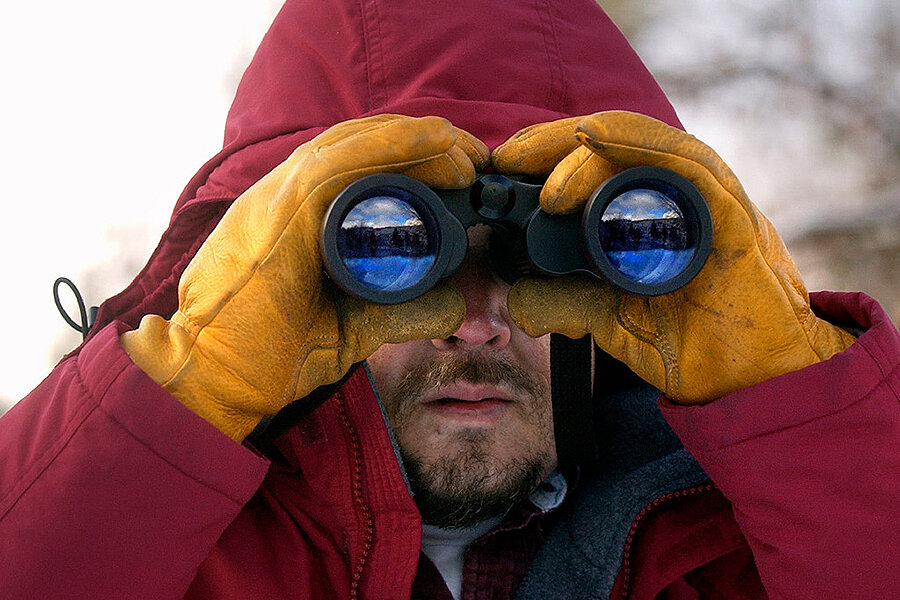What's a Christmas bird count?
Loading...
Next Wednesday, birdwatchers throughout the nation will begin braving the cold for the National Audubon Society’s Christmas Bird Count.
The count, which runs from December 14 to January 5, includes day-long local outings throughout the country. Participants cover 15-mile wide circles, with one compiler per group, tallying every bird seen or heard throughout the day. Volunteers don’t need any previous birdwatching experience, and can participate in as many counts as they like.
The annual tradition began in 1900 as a social alternative to large-scale hunting events, which conservationists feared were decimating US bird populations. Today, the practice has an additional purpose: providing valuable data to ornithological researchers.
The Christmas count was first proposed by ornithologist Frank Chapman. A prolific, self-taught conservationist, Mr. Chapman hoped to bring communities together in the interest of science, while drawing participation away from a grisly social custom called the “side hunt.”
“Sportsmen were accustomed to meet on Christmas Day, ‘choose sides,’ and then, as representatives of the two bands resulting, hie them to the fields and woods on the cheerful mission of killing practically everything in fur or feathers that crossed their path,” Chapman wrote in an issue of Bird Lore, which he edited, in 1900.
Today’s Christmas count represents one of the most extensive and geographically diverse data sets in American ornithology.
"The information collected provides valuable statistics on declines and increases in particular species, geographical shifts in winter ranges, and other indicators of the status of bird populations," Peter Berle, then the president of the Audubon Society, wrote in The Christian Science Monitor in 1986, when the tradition was 40,000 bird-watchers strong:
But the Christmas bird count and the data generated have a deeper importance. As birders see the effects of pollution and loss of habitat, they have become more sensitive to the interrelatedness of all life; this is why the National Audubon Society has evolved naturally from a birding group to one of the nation's largest and most deeply committed conservation organizations.
As technologies improve through the years, opportunities for citizen science have grown considerably. Today, amateurs can get involved in a number of worthy scientific initiatives, from testing water conditions to spotting storm systems on Jupiter. The Audubon Society hosts a similar event, dubbed the Great Backyard Bird Count, every year during Presidents’ Day weekend. But citizen science has limits, particularly when it comes to birdwatching.
In 2010, researchers from the Swedish University of Agricultural Science found that citizen science bird counts weren’t always reliable. Volunteers frequently neglect to count common bird species, they said, rendering the data less useful for population studies. Amateurs were much more consistent in counting rare species.
But data-gathering isn’t the only benefit of bird counts.
“Voluntary citizen-based platforms are not only tools for collecting great amounts of data, they also engage the public, something that forms a basis for future interest in biodiversity and conservation,” researchers wrote in the journal Biological Conservation.








